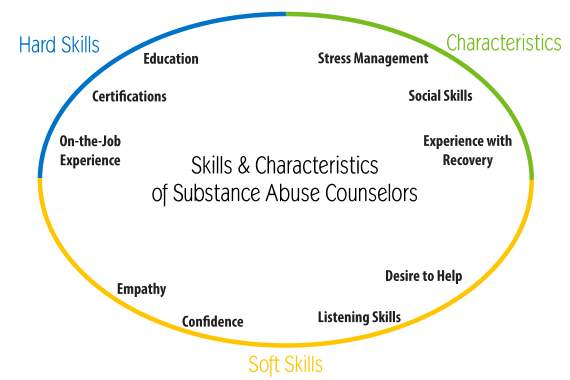Some Known Facts About How Recycling Affects Your Health Mental.
The treatment or referral for treatment of students with existing social, emotional, or behavioral illness. The early recognition of social, psychological, or behavioral problems and the arrangement of early intervention services (how does homelessness affect mental health). The advancement and implementation of programs to help kids in dealing with violence. The handling of school suicides to make sure school leaders efficiently communicate with trainees, instructors, and families while likewise doing whatever in their power to prevent another suicide.
Making use of referral systems that effectively link such students to treatment and intervention services in the school and in the community. Techniques that promote a favorable school environment. Models for school-based cooperation, coordination, and assessment. How to deal with suicide when it occurs and what to do to prevent future suicides.
School-Based Mental Health Services. Recovered from: http://pediatrics.aappublications.org/content/113/6/1839.full. National Institute of Mental Health, U.S. Department of Health and Human Services (2017 ). Mental disorder. Obtained from: https://www.nimh.nih.gov/health/statistics/mental-illness.shtml. American School Therapist Association( 2017). State-By-State Student-To-Counselor Ratio Report: ten years Trends. Obtained from: https://www.schoolcounselor.org/asca/media/asca/Publications/ratioreport.pdf. American School Counselor Association. The Function of the Professional School Counselor. Union to Support Grieving Trainees (2015). Crisis & Unique Circumstances: Suicide.
Obtained from: https://grievingstudents.org/modules/crisis-special-circumstances/. Committee for Education Financing( 2014). FY 2015 Budget Plan Action. Recovered from: http://cef.org. Cowan, K. C., Vaillancourt, K., Rossen, E., & Pollitt, K.( 2013). A structure for safe and successful schools. Obtained from the National Association of School Psychologists website: http://www.nasponline.org/resources/framework-safe-and-successful-schools.aspx. Structure Ranks: A Thorough Framework for Effective School Leaders. Retrieved from: https://www.nassp.org/professional-learning/building-ranks-for-school-leaders/ National Association of School Psychologists( 2016). School-Based Mental Health Providers: Improving Trainee Learning and Wellness. Obtained from: https://www.nasponline.org/resources-and-publications/resources/mental-health/school-psychology-and-mental-health/school-based-mental-health-services Schwarz, Susan Wile( 2009). Teen Mental Health in the United States. Obtained from the National Center for Kid in Povertywebsite: http://www.nccp.org/publications/pub_878.html. how does mental health affect society. Michael EdD, Abel, Madelaine R. BA, Hoover, Sharon PhD, Jellinek, Michael MD, Fazel, Mina DM, MRC Psych( 2017). Scope, Scale, and Dose of the World's Largest School-Based Mental Health Programs. Recovered from the Harvard Evaluation of Psychiatry: https://journals.lww.com/hrpjournal/Abstract/2017/09000/Scope,_Scale,_and_Dose_of_the_World_s_Largest. 4. aspx Shain, B( 2007). Suicide and Suicide Attempts in Adolescents. Obtained from the American Academy of Pediatrics website: http://pediatrics.aappublications.org/content/120/3/669.full. National Center for School Crisis and Bereavement. Obtained from: https://sowkweb.usc.edu/about/centers-affiliations/national-center-school-crisis-and-bereavement. U.S. Department of Education Workplace for Civil Rights( 2014). Civil Rights Data Collection: Teacher Equity. Obtained from: http://ocrdata.ed.gov/Downloads/CRDC-Teacher-Equity-Snapshot.pdf. Researchers in Sweden are performing a prospective mate research study to analyze the association in between teaching practices and social environments in schools and the danger of adolescent mental illness and psychiatric conditions. The study procedure was released in BMC Psychiatry." Longitudinal research studies suggest strong associations in between school proficiency.
Our How They Affect Mental Health Ideas
and indications of mental health throughout their adult years, however the systems of such associations are not totally illuminated," composed Maria Rosaria Galanti, MD, PhD, from the Department of Public Health Sciences in the Centre for Epidemiology and Community Medication( CES) at the Karolinska Institutet in Stockholm County's Healthcare District( SLSO) and associates." Since of the numerous pathways included, a particular focus is often put on what kids bring with them when they enter schools (eg, children's social background) instead of on school environment or the complicated interaction between numerous influences," the authors composed. The researchers are performing the Kupol study( an acronym for" Knowledge on young individuals's mental health and knowing" in Swedish), a prospective associate study to examine modifications in adolescents' mental health in relation to changes in school. The scientists recruited seventh graders from the academic year of 2013-2014 and 2014-2015 in both urban and backwoods of 8 regions of southern and central Sweden: Gvleborg, Jnkping, Stockholm, Sdermanland, Uppsala, Vrmland, Vstmanland, https://what-does-cocaine-do-to-your-brain.drug-rehab-fl-resource.com/ and rebro. Of the 535 qualified schools, 101 (19%) were ready to participate in the study. Parents were likewise invited to take part. Most of the individuals had extremely informed parents. Two follow up studies were conducted during the years when the children were still in compulsory school, with a 3rd planned throughout the shift to upper secondary school (2017-2019). Understandings of the school's culture, track record, and social climate is being gathered from kids and instructors utilizing the PESOC scale( Pedagogical and Social Climate of a school). The Center for Epidemiologic Research Depression Scale for Children( CES-DC) is likewise being used. At baseline, 5% of the scores from the SDQ and 9.6% of the scores from the CES-DS indicated mental health issue. Saliva samples will also be collected from about 1500 students at standard and at the end of 9th grade. Additional information about class, household, and kid characteristics was collected at baseline and at follow-up to acquire insight into possible confounding aspects." The primary strengths of the Kupol research study include its longitudinal design, with yearly data collection throughout and beyond upper primary school, and the wide variety of info readily available on various levels, utilizing multiinformant and multi-method evaluations." In summary, the Kupol research study associate supplies a special platform to evaluate the association in between.
different dimensions of school level aspects and mental health among teenagers - how does mental health affect school." Galanti MR, Hultin H, Dalman C, et al. School environment and mental health in early teenage years a longitudinal study in Sweden (KUPOL). BMC Psychiatry. Numerous trainees feel worry when initially acknowledging a mental health issue within themselves, as they may not be able to determine where it originated from. Trainees who formerly felt nervous throughout public speaking however unexpectedly experience overwhelming panic naturally struggle to determine what altered. Elements such as significant life modifications, politics, household, academic pressure, relationship issues, and cash can all add to changes in mental health. Suicide is the third leading cause of death in students aged 1024, with 90 percent of those dying by suicide having an underlying psychological illness. 37 percent of trainees aged 14 or older with a mental health concern leave of school. Of the youth in regional or state juvenile justice centers, 70 percent have a psychological disease. By going without counseling, medication, and other practical tools for dealing with stress and anxiety, children are most likely to experience longreaching problems. Stress and anxiety conditions have been on the rise in K12 children considering that a minimum of the 1950s and studies reveal that numbers are.


anticipated to continue rising in the coming years. Anxiety can be a regular part of youth if experienced in stages, however trainees with ongoing symptoms often have a treatable anxiety disorder. In addition to harming concentration, both can lead to racing thoughts, bad judgment, and impaired memory. On the psychological spectrum, anxiety, agitation, and the inability to relax can result, leading to procrastination or, for some trainees, self-medication with alcohol and drugs. Stress and anxiety and stress may likewise manifest themselves physically, triggering trainees to struggle with nausea, rapid heart beat, dizziness, and chest discomforts. Due to the fact that trainees can sometimes feel (needlessly) ashamed about having a psychological health concern, lots of find it valuable to benefit from online support system. These areas provide anonymity, numerous point of views, and.
various stories of how the illness impacts them. They are also totally free. Offered that anxiety can make students feel helpless, some find that learning more about the problem and how to handle it can assist them feel more in control.
